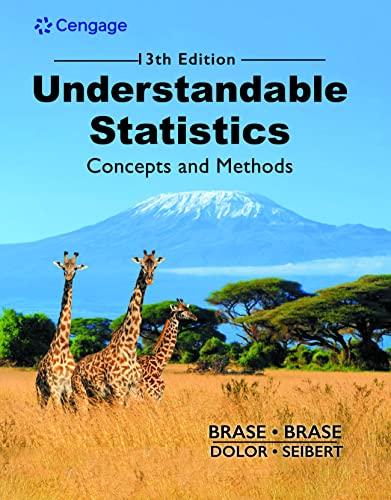Totals Instead of Averages Let x be a random variable that represents checkout time (time spent in
Question:
Totals Instead of Averages Let x be a random variable that represents checkout time (time spent in the actual checkout process) in minutes in the express lane of a large grocery. Based on a consumer survey, the mean of the x distribution is about m 5 2.7 minutes, with standard deviation s 5 0.6 minute. Assume that the express lane always has customers waiting to be checked out and that the distribution of x values is more or less symmetric and mound-shaped. What is the probability that the total checkout time for the next 30 customers is less than 90 minutes? Let us solve this problem in steps.
(a) Let x (for i 51, 2, 3, …, 30) i represent the checkout time for each customer. For example, 1 x is the checkout time for the first customer, 2 x is the checkout time for the second customer, and so forth. Each xi has mean m 5 2.7 minutes and standard deviation s 5 0.6 minute. Let 5 1 1 1 1 2 30 w x x x. Explain why the problem is asking us to compute the probability that w is less than 90.
(b) Use a little algebra and explain why w , 90 is mathematically equivalent to w/30 , 3. Since w is the total of the 30 x values, then w/30 5x.
Therefore, the statement x , 3 is equivalent to the statement w , 90. From this we conclude that the probabilities P(x , 3) and P(w , 90) are equal.
(c) What does the central limit theorem say about the probability distribution of x ? Is it approximately normal? What are the mean and standard deviation of the x distribution?
(d) Use the result of part
(c) to compute P(x , 3).
What does this result tell you about P(w , 90)?
AppendixLO1
Step by Step Answer:

Understandable Statistics Concepts And Methods
ISBN: 9780357719176
13th Edition
Authors: Charles Henry Brase, Corrinne Pellillo Brase





